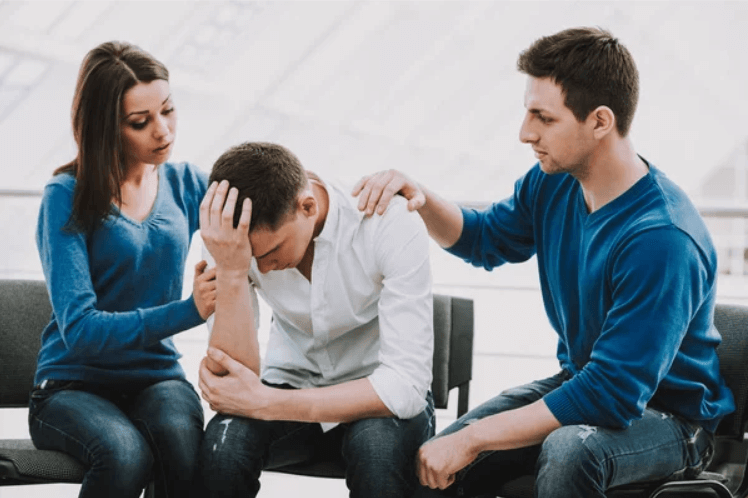Anxiety is a normal and often healthy emotion that alerts us to danger and helps us prepare for important events. But when anxiety becomes persistent, overwhelming, and interferes with daily life, it may be a sign of an anxiety disorder. According to the National Institute of Mental Health (NIMH), anxiety disorders are the most common mental health condition in the U.S., affecting millions of people each year.
There are six major types of anxiety disorders, each with its own distinct features. Understanding these can help individuals recognize symptoms in themselves or others and seek the appropriate support or treatment.
1. Generalized Anxiety Disorder (GAD)
Generalized Anxiety Disorder is characterized by excessive, uncontrollable worry about everyday things, such as work, health, finances, or family. People with GAD often expect the worst, even when there is little or no reason for concern.
Common symptoms include:
-
Restlessness or feeling on edge
-
Fatigue
-
Difficulty concentrating
-
Irritability
-
Muscle tension
-
Sleep disturbances
Unlike occasional anxiety that comes and goes, GAD can be persistent and interfere with daily activities, relationships, and quality of life. GAD often develops gradually and can affect both adults and children.
2. Panic Disorder
Panic disorder involves recurring, unexpected panic attacks—sudden episodes of intense fear that peak within minutes.
Symptoms of a panic attack may include:
-
Heart palpitations or a racing heartbeat
-
Shortness of breath or a feeling of choking
-
Chest pain
-
Dizziness or lightheadedness
-
Sweating or chills
-
Nausea
-
A sense of impending doom or loss of control
People with panic disorder often develop fear of having another attack, which can lead to avoidance of certain places or situations. Over time, this can significantly limit a person’s ability to function normally.
3. Social Anxiety Disorder
Social Anxiety Disorder involves an intense fear of social or performance situations, where a person may feel embarrassed, judged, or rejected. This is more than just shyness; it’s a deep-rooted anxiety that can disrupt daily life.
Situations that may trigger social anxiety:
-
Public speaking
-
Eating or drinking in front of others
-
Meeting new people
-
Using public restrooms
-
Attending parties or group gatherings
Many people with social anxiety disorder may go to great lengths to avoid these situations, or they may endure them with extreme distress. This can affect work performance, academic achievement, and relationships.
4. Specific Phobias
A specific phobia is an intense, irrational fear of a particular object or situation that poses little or no actual danger.
Common phobias include:
-
Heights (acrophobia)
-
Flying (aerophobia)
-
Spiders (arachnophobia)
-
Needles or medical procedures (trypanophobia)
-
Enclosed spaces (claustrophobia)
When confronted with the feared object or situation, individuals may experience a panic attack or extreme anxiety. Unlike general anxiety disorders, phobias are usually tied to a specific trigger and can often be treated effectively through exposure therapy or cognitive-behavioral techniques.
5. Obsessive-Compulsive Disorder (OCD)
Though now classified separately by the Diagnostic and Statistical Manual of Mental Disorders (DSM-5), Obsessive-Compulsive Disorder is often discussed in the context of anxiety disorders due to its symptoms.
OCD involves:
-
Obsessions – Recurrent, unwanted thoughts or images (e.g., fear of germs, need for symmetry)
-
Compulsions – Repetitive behaviors or mental acts performed to reduce anxiety caused by the obsessions (e.g., handwashing, checking, counting)
People with OCD may recognize that their behaviors are excessive, but feel powerless to stop. OCD can consume hours of a person’s day and greatly disrupt their ability to function.
6. Post-Traumatic Stress Disorder (PTSD)
Like OCD, Post-Traumatic Stress Disorder is no longer technically classified under anxiety disorders but remains closely associated due to its anxiety-driven symptoms.
PTSD can develop after a person experiences or witnesses a traumatic event, such as war, assault, accident, or natural disaster.
Symptoms may include:
-
Flashbacks or nightmares
-
Avoidance of reminders of the trauma
-
Hyperarousal (e.g., being easily startled, irritable, or constantly on guard)
-
Negative changes in mood or thinking
PTSD can appear weeks or even months after the event and may be chronic if left untreated. Therapy, especially trauma-focused cognitive-behavioral therapy, and medication can be very effective in managing symptoms.
Seeking Help for Anxiety Disorders
If you or someone you know is experiencing persistent anxiety that interferes with daily life, it’s important to seek help. Anxiety disorders are highly treatable, especially when addressed early.
Treatment options include:
-
Cognitive Behavioral Therapy (CBT)
-
Medication (such as SSRIs or benzodiazepines, depending on the type and severity of symptoms)
-
Lifestyle changes (like mindfulness, regular exercise, and healthy sleep routines)
-
Support groups and counseling
Mental health providers like OPA Behavioral Health offer specialized care for various anxiety disorders treatment, with services such as psychiatric evaluations, therapy, and medication management, both in-person and via telehealth across Florida.
Final Thoughts
Understanding the different types of anxiety disorders can empower individuals to identify their symptoms and seek the right support. While anxiety is a normal part of life, it shouldn’t control your ability to live fully. With the right treatment and resources, recovery is not only possible—it’s probable.
If you’re struggling with anxiety, don’t wait. Talk to a mental health professional and take the first step toward healing.



